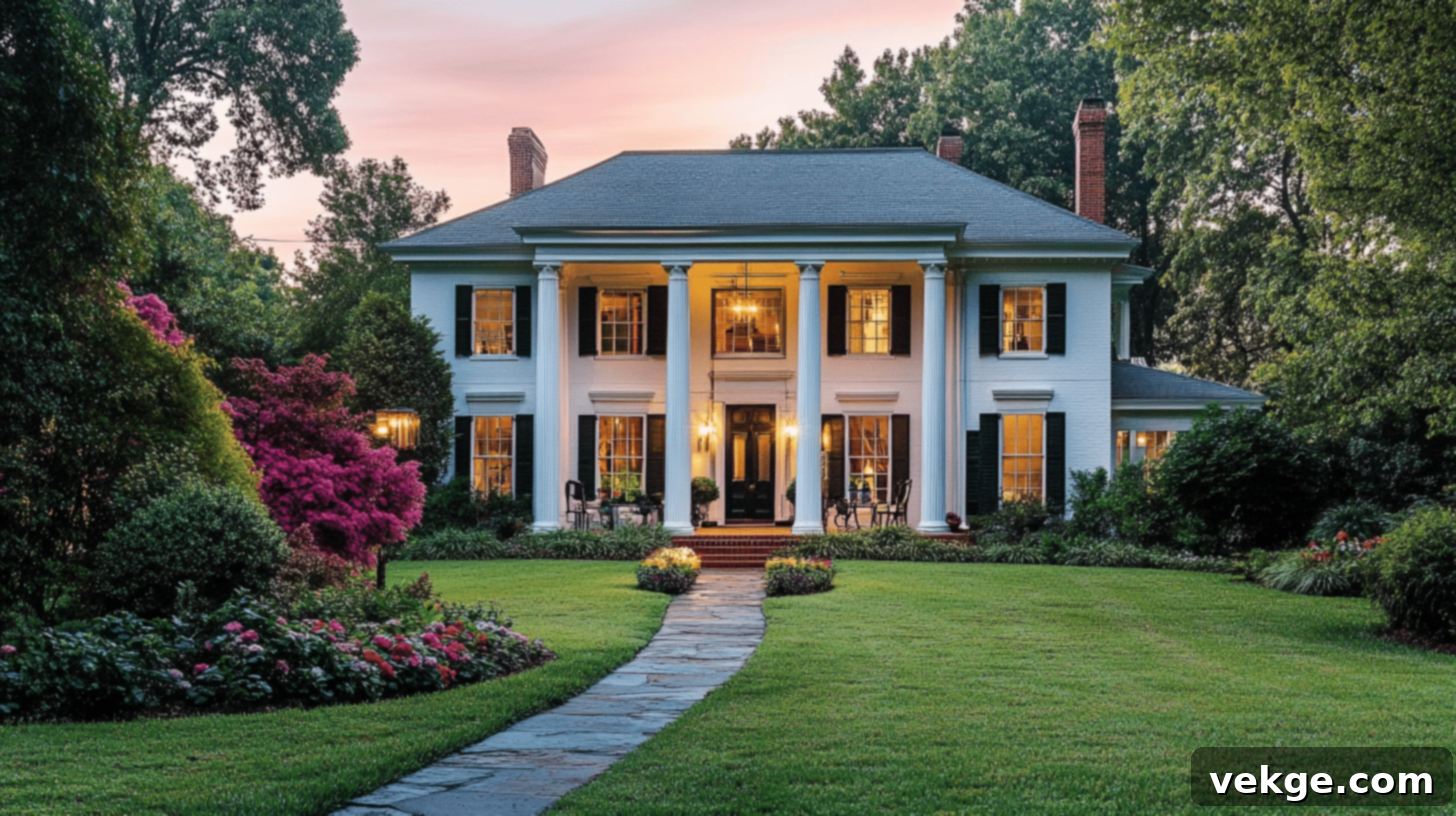Modern Georgian Homes: Blending Classic Charm with Contemporary Living
Georgian-style homes, with their timeless appeal, represent a captivating fusion of old-world grandeur and modern functionality. Originating in the 18th and early 19th centuries, this enduring architectural style is celebrated for its perfectly balanced designs, harmonious proportions, and exquisite classical detailing. These elements together create a sense of refined elegance that has captivated homeowners for centuries.
In today’s architectural landscape, modern Georgian homes beautifully reinterpret these classic attributes. They integrate contemporary materials, innovative layouts, and advanced building techniques, making them perfectly suited for the demands and aesthetics of 21st-century living. This evolution ensures that the inherent beauty and order of Georgian design remain relevant and highly desirable.
Whether you are embarking on the renovation of a historic property or planning the construction of a brand-new residence, a deep understanding of Georgian design principles is invaluable. It empowers you to create spaces that are not only visually stunning but also inherently practical and comfortable. This guide will serve as your comprehensive resource, navigating the distinctive characteristics of Georgian homes, from their iconic symmetrical exteriors to their thoughtfully modernized interiors.
Join us as we explore the core elements that define this magnificent style and provide actionable tips for seamlessly incorporating these sophisticated design ideas into your own living environment, ensuring your home exudes both classical charm and contemporary comfort.
Key Features of a Modern Georgian-Style House
The modern Georgian-style house stands as a testament to an architectural approach that flourished during the 18th and early 19th centuries, evolving from a rich lineage of classical design principles. This sophisticated style is deeply rooted in mathematical precision and classical ideals, emerging as a refined expression of cultural and artistic values. It beautifully reflects a profound appreciation for balance, order, and visual harmony, all while adapting to contemporary needs.
Symmetry: The Foundation of Design
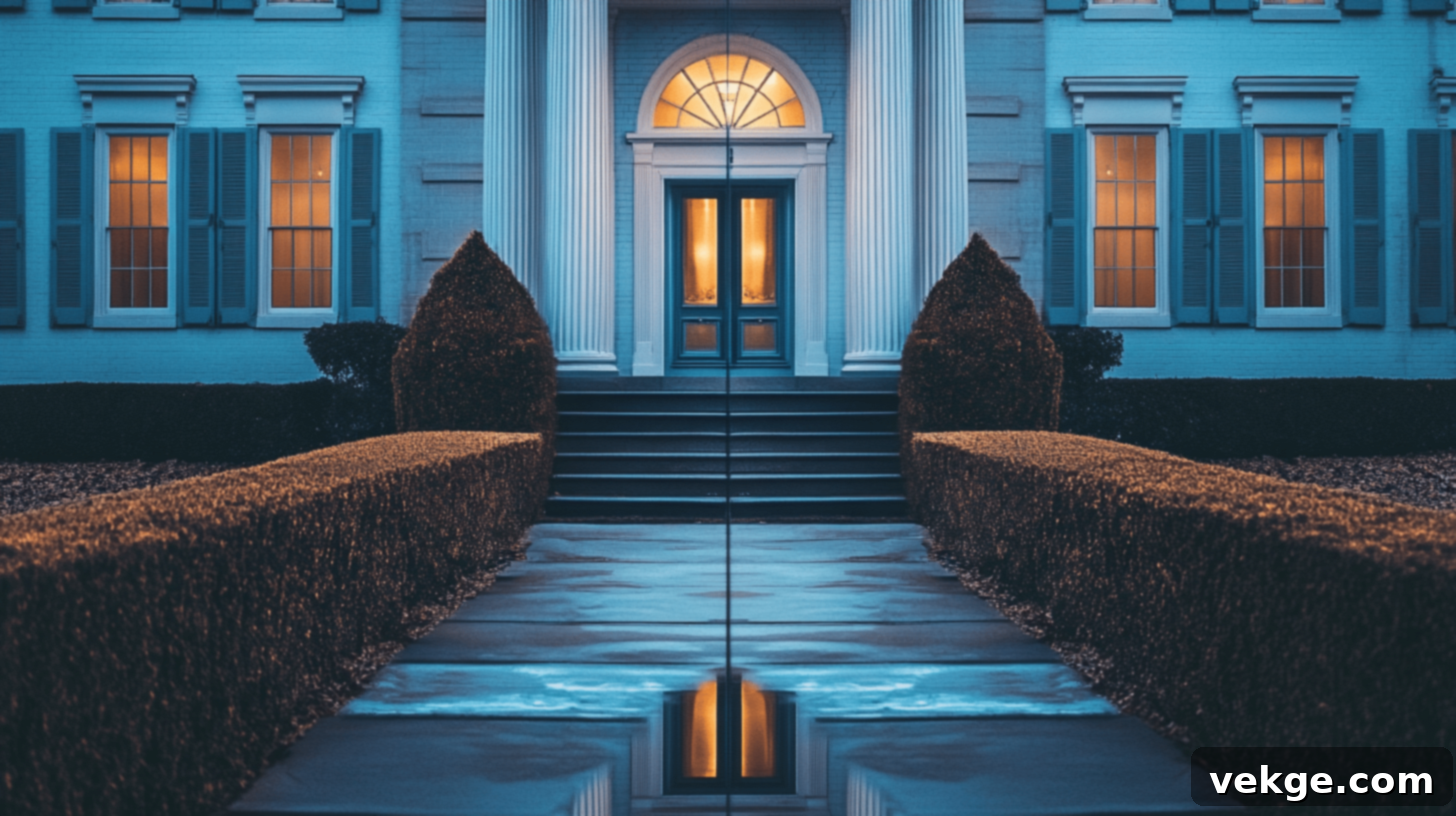
Symmetry is arguably the most defining characteristic of modern Georgian architecture, serving as the bedrock upon which its entire aesthetic is built. It mandates a perfect balance across the structure, where each side of the building meticulously mirrors the other. This creates a powerful visual harmony and a sense of calm order that is instantly recognizable. Every architectural detail, from the largest structural component to the smallest decorative accent, is thoughtfully planned to contribute to this cohesive and orderly appearance.
- Windows: The placement of windows is a prime example of Georgian symmetry. They are precisely mirrored across the facade, with each floor featuring windows that are uniformly spaced and identical in size and shape. This meticulous arrangement not only enhances the building’s aesthetic appeal but also contributes to a balanced, pleasing exterior.
- Doorways: The front door typically occupies the central position of the building’s facade, establishing itself as the focal point of the exterior. To maintain perfect symmetry, windows or other significant architectural features are carefully placed on either side of the doorway, creating a balanced and grand entrance.
- Rooflines: Georgian homes are characterized by their simple, balanced rooflines. These typically exhibit equal heights and proportions on each side, reinforcing the overall symmetry of the building. This understated elegance ensures that the roof complements the structure without drawing excessive attention away from the primary facade.
- Architectural Elements: The principle of symmetry extends to virtually every architectural element. Whether it’s the stately columns framing an entrance, the intricate door surrounds, or the arrangement of windows, each component is evenly spaced and perfectly aligned. This rigorous adherence to symmetry ensures that the structure maintains a harmonious and dignified appearance from every vantage point.
Proportion: Mathematical Perfection

Georgian architecture is profoundly rooted in classical proportions, drawing heavily from mathematical principles, most notably the Golden Ratio. This ancient formula, approximately 1.618, has been employed for centuries to create designs that are inherently balanced, aesthetically pleasing, and universally recognized as harmonious. In Georgian design, this principle ensures that every part of the house, from its grand exterior to its intimate interior spaces, complements the whole, resulting in a look of unparalleled refinement and classical beauty.
- Golden Ratio: The Golden Ratio plays a pivotal role in determining the ideal proportions for various elements within a Georgian home, including windows, doors, and even entire rooms. Its application ensures that each design element feels naturally balanced and perfectly proportionate, contributing to an overall sense of visual ease and classical elegance.
- Room Dimensions: Interior spaces in Georgian homes are meticulously designed with proportionality in mind. The height, width, and length of each room are carefully calculated to maintain a consistent sense of harmony and balance throughout the interior. This thoughtful planning creates comfortable, inviting, and aesthetically pleasing environments.
- Building Shape: The exterior of a Georgian house is typically shaped using these classical proportions, often resulting in a stately rectangular or square layout. The length and width of the building are precisely balanced, creating a robust and dignified presence that is both monumental and graceful.
- Design Components: The influence of the Golden Ratio extends far beyond the fundamental shape of the house. It subtly guides the design of everything from the precise distance between windows and the elegant height of ceilings to the careful spacing of columns. This comprehensive application ensures that every aspect of the structure adheres to these idealized proportions, culminating in a design that is both intellectually rigorous and visually stunning.
Classical Detailing: Refined Beauty
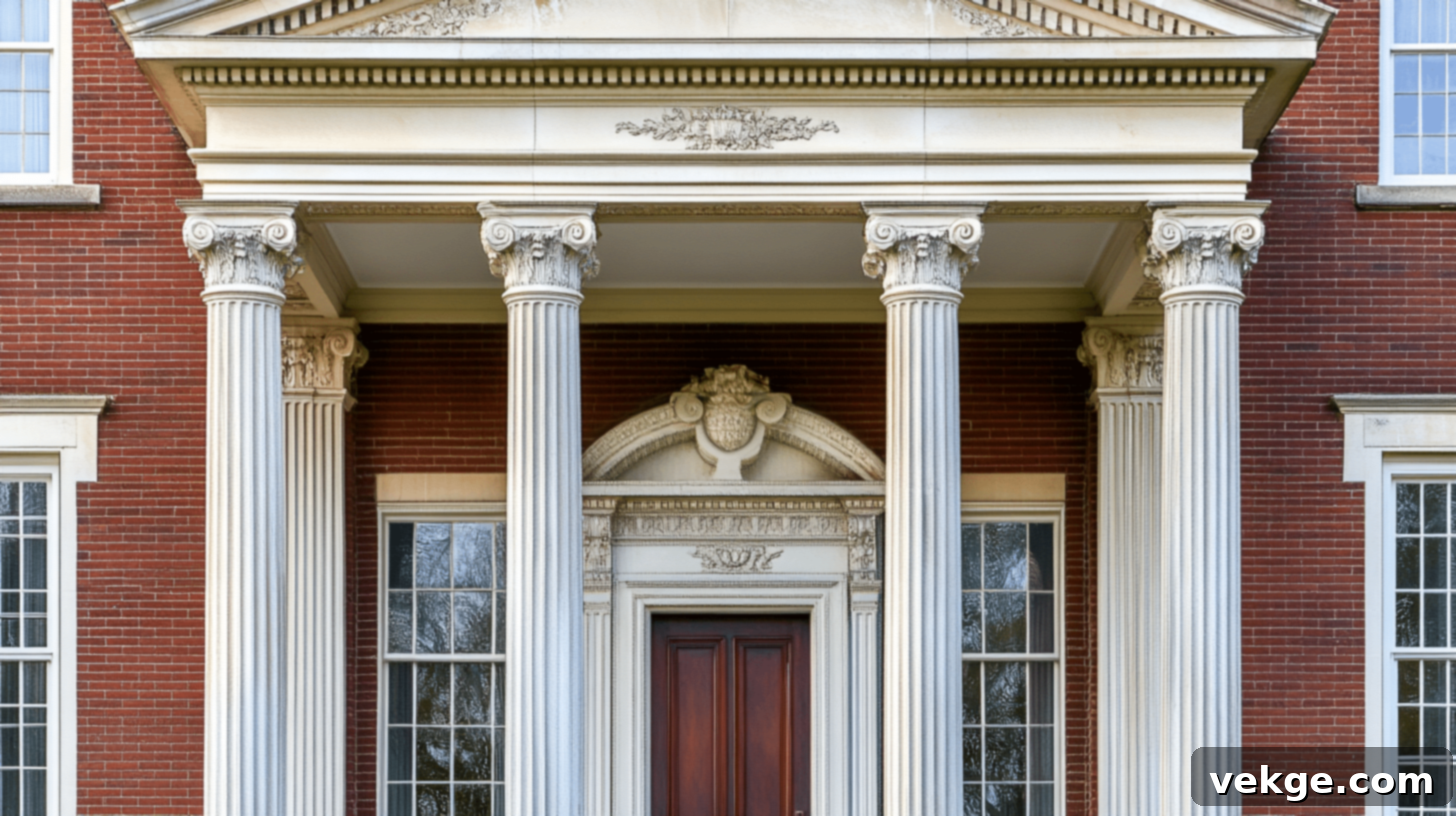
Classical detailing is an unmistakable hallmark of the Georgian style, directly importing and adapting elements from ancient Greek and Roman architecture into its design. This not only imbues the exterior with exquisite beauty and a sense of historical gravitas but also serves as a profound showcase of deep respect for tradition, artistry, and exceptional craftsmanship. These details elevate a Georgian home from mere structure to a work of art.
- Columns: Columns are among the most iconic and recognizable features of Georgian homes. They often feature the distinct styles of the classical orders: Doric (simple and robust), Ionic (with scrolling volutes), or Corinthian (ornate with acanthus leaves). These stately columns are frequently employed to frame grand doorways or to line expansive front porches, adding significant depth, structural integrity, and a sense of classical grandeur to the facade.
- Pediments: Positioned prominently above doorways and windows, Georgian houses frequently incorporate ornate pediments. These distinctive triangular shapes directly evoke the powerful influence of classical Greek temple architecture, bestowing a sense of importance and formality upon the building’s key entry points and openings. They are often adorned with decorative elements that further enhance their visual impact.
- Moldings and Trim Work: Intricate moldings and meticulously crafted trim work are extensively used around windows, doors, and ceilings in Georgian design. These detailed elements add significant depth, texture, and visual interest to both interior and exterior surfaces. Usually finely crafted with precision, they provide an undeniable sense of refinement and elegance, contributing immensely to the overall beauty and character of the design.
- Cornices: Cornices, the decorative horizontal projections found along the roofline or at the junction of walls and ceilings, are another crucial feature in Georgian architecture. These elements are often elaborately sculpted and profiled to create a highly polished and finished look. They serve to seamlessly and attractively tie the roof and walls together, providing a graceful transition and a strong architectural statement.
Materials in Georgian Design: A Blend of Tradition and Innovation
Understanding the materials used in Georgian design is crucial, as they contribute significantly to its distinctive beauty, durability, and lasting appeal. While traditional materials established the style’s character, modern alternatives ensure its relevance and accessibility today.
Traditional Materials
Historically, Georgian design relied heavily on a selection of robust, natural materials: brick, stone, and slate. These materials were chosen not only for their availability and structural integrity but also for their aesthetic qualities, which contributed to the warm, inviting, yet imposing appearance we associate with classic Georgian homes.
- Brick: Offering exceptional durability and a warm, inviting aesthetic, brick was a staple. Its rich color variations and ability to withstand the elements made it a practical and beautiful choice for facades. Red, brown, and sometimes even painted bricks defined many Georgian structures.
- Stone: For grander homes and more prestigious constructions, local stone provided an unparalleled sense of strength, permanence, and prestige. Whether finely cut ashlar or rougher, more rustic varieties, stone added a monumental quality to the architecture.
- Slate Roofing: Completing the classic Georgian look, slate roofing was prized for its extraordinary longevity, superior weather resistance, and elegant, natural aesthetic. The subtle variations in slate tiles created a textured roofline that perfectly complemented the balanced facades below.
Modern Material Alternatives
Today’s modern Georgian-style homes deftly balance traditional aesthetics with contemporary performance. Architects and builders frequently utilize advanced material alternatives that mimic the classic appearance while offering significant improvements in efficiency, maintenance, and cost-effectiveness.
- Composite Sidings: Engineered to replicate the look of wood or brick, composite sidings offer enhanced insulation properties, superior resistance to pests and rot, and require significantly less maintenance than their natural counterparts.
- PVC Trim and Poly-Ash Components: These synthetic materials are excellent substitutes for traditional wood trim. They are impervious to moisture, rot, and insects, ensuring crisp, long-lasting details around windows, doors, and cornices without the need for constant painting or repair.
- Engineered Stone: Modern engineered stone products provide the grand appearance of natural stone at a fraction of the cost and weight. They offer consistent quality, easier installation, and are often more environmentally friendly due to their manufacturing process.
- Fiber Cement Siding: A highly durable and versatile material, fiber cement can be molded and textured to perfectly mimic brick, wood clapboard, or even stucco, offering excellent fire resistance and longevity with minimal upkeep.
These modern alternatives allow for the faithful reproduction of Georgian architectural elements while incorporating the benefits of contemporary building science, making classic style accessible and sustainable for today’s homeowners.
Interior Design in Georgian Homes: Blending Formality with Modern Comfort
Georgian homes are renowned for their inherent beauty and sophisticated style, and their interiors are a magnificent reflection of this. Characterized by a sense of refined order and classical elegance, Georgian interiors masterfully blend formality with a growing emphasis on comfort and family living in their modern interpretations.
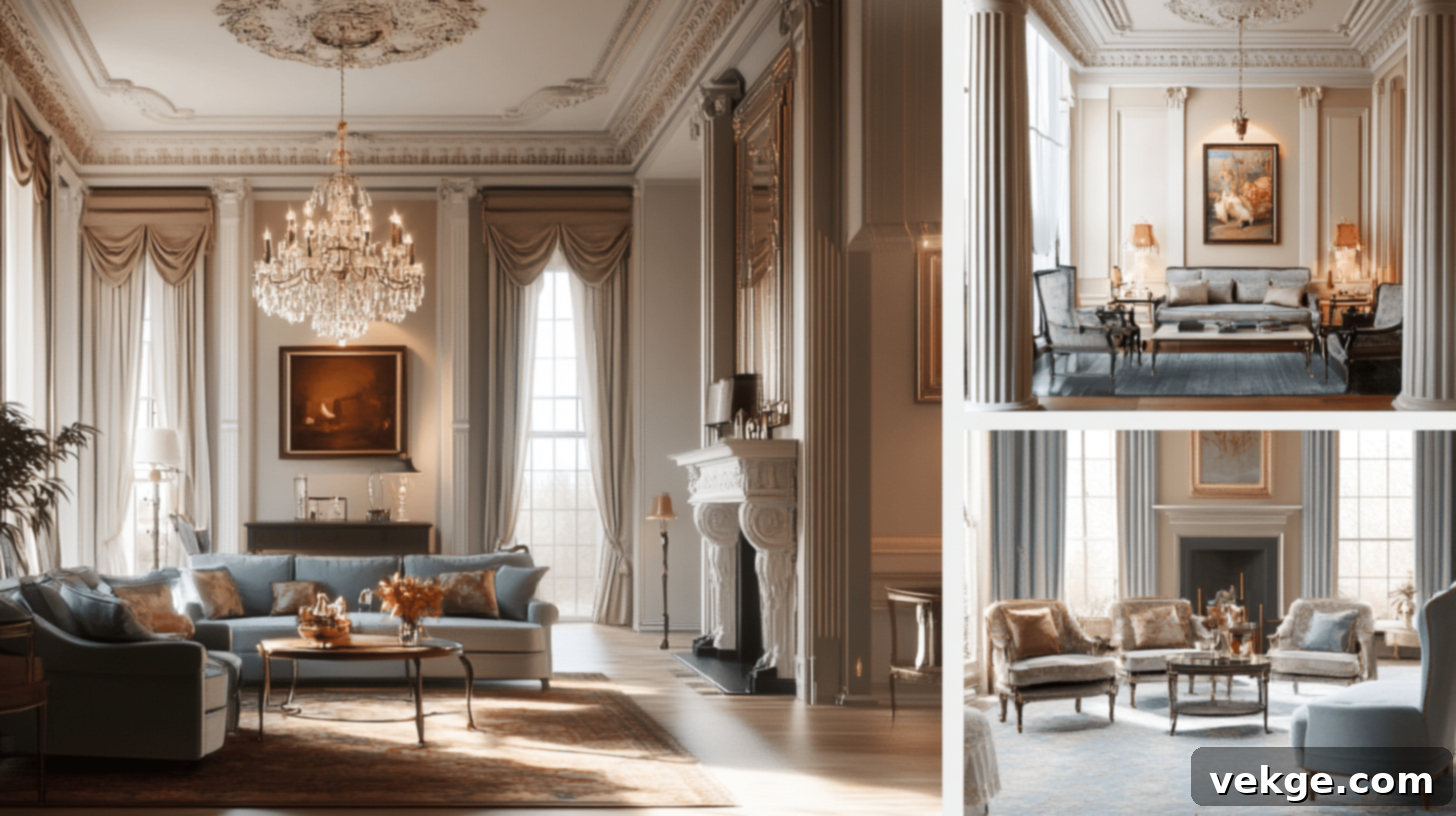
Room Layouts: A Structured Approach
Traditional Georgian homes typically feature a clear, structured layout designed for both social display and practical living. Formal spaces, such as drawing rooms and dining rooms, are strategically placed at the front of the house. These grand rooms are intended to make a strong first impression, signaling the home’s status and providing elegant settings for entertaining guests. Conversely, more private family areas, like informal sitting rooms, studies, or bedrooms, are usually situated at the back or on upper floors, offering a more relaxed and secluded atmosphere for daily life. Thoughtfully designed hallways and elegant staircases serve to gracefully separate these public and private realms, maintaining a smooth and intuitive flow throughout the residence while preserving the distinct character of each space.
Ceilings and Trims: The Art of Detail
Georgian interiors place a significant emphasis on exquisite craftsmanship, particularly evident in their decorative moldings and trim work. Ceilings often feature elaborate center medallions, from which chandeliers beautifully descend, or intricate cornices that soften the transition between walls and ceilings. Walls are frequently adorned with elegant chair rails, which protect them from furniture, and delicate picture frame moldings that add architectural interest. Crown molding, a sophisticated finishing touch, graces the intersection where walls meet the ceiling, while substantial baseboards provide a strong, classic finish to the lower walls. These layers of detailing add depth, character, and a luxurious feel to every room, showcasing a commitment to refined aesthetics.
Modern Updates for Contemporary Living
Today’s Georgian homes brilliantly bridge the gap between traditional style and modern needs. While the fundamental symmetrical layout is often preserved, contemporary interpretations frequently introduce more open-plan elements to enhance natural light and improve spatial flow. Kitchens, once relegated to the back of the house, are now larger, more integrated, and often connect seamlessly with family spaces, becoming the true heart of the home. Traditional moldings might be simplified for easier upkeep, or updated trim colors might be used to create stylish contrasts with modern wall hues. Furthermore, new Georgian homes are typically equipped with advanced lighting systems, energy-efficient heating and cooling, and integrated smart home technology, successfully combining classic charm with the ultimate in comfort and convenience for today’s discerning families.
Landscaping and Exterior Features: Extending the Grandeur
The exterior of a Georgian home, including its surrounding landscape, is considered as vital to its overall aesthetic as the interior. Thoughtful exterior design extends the home’s elegance and symmetry into the natural environment.
Symmetrical Gardens and Outdoor Living Spaces: Georgian homes are famously complemented by balanced garden layouts that precisely mirror the architectural symmetry of the residence. Front yards often feature meticulously manicured lawns and matching pathways that lead directly to the central entrance, creating a grand sense of arrival. In the backyard, outdoor living spaces such as patios for al fresco dining and comfortable sitting areas are arranged in balanced formations, often framed by hedges or low walls. These ordered outdoor “rooms” effectively extend the formal qualities of the home into the landscape, providing elegant and functional exterior environments.
Indoor-Outdoor Connection: A key aspect of Georgian landscaping is its ability to create smooth, harmonious transitions between the interior of the home and the garden. Formal boxwood hedges often outline distinct garden sections, while straight, classical stone walkways guide movement through the landscape. Strategically placed ornamental trees and shrubs are used to frame picturesque views from interior windows, enhancing the connection to nature. French doors, a common feature, open directly onto terraces or patios, seamlessly linking interior rooms with corresponding outdoor spaces. This thoughtful arrangement ensures that the garden feels like a natural and integral extension of the home, providing a cohesive and expansive living experience.
Room-by-Room Modern Georgian Design Tips
Living Room: Balanced Elegance
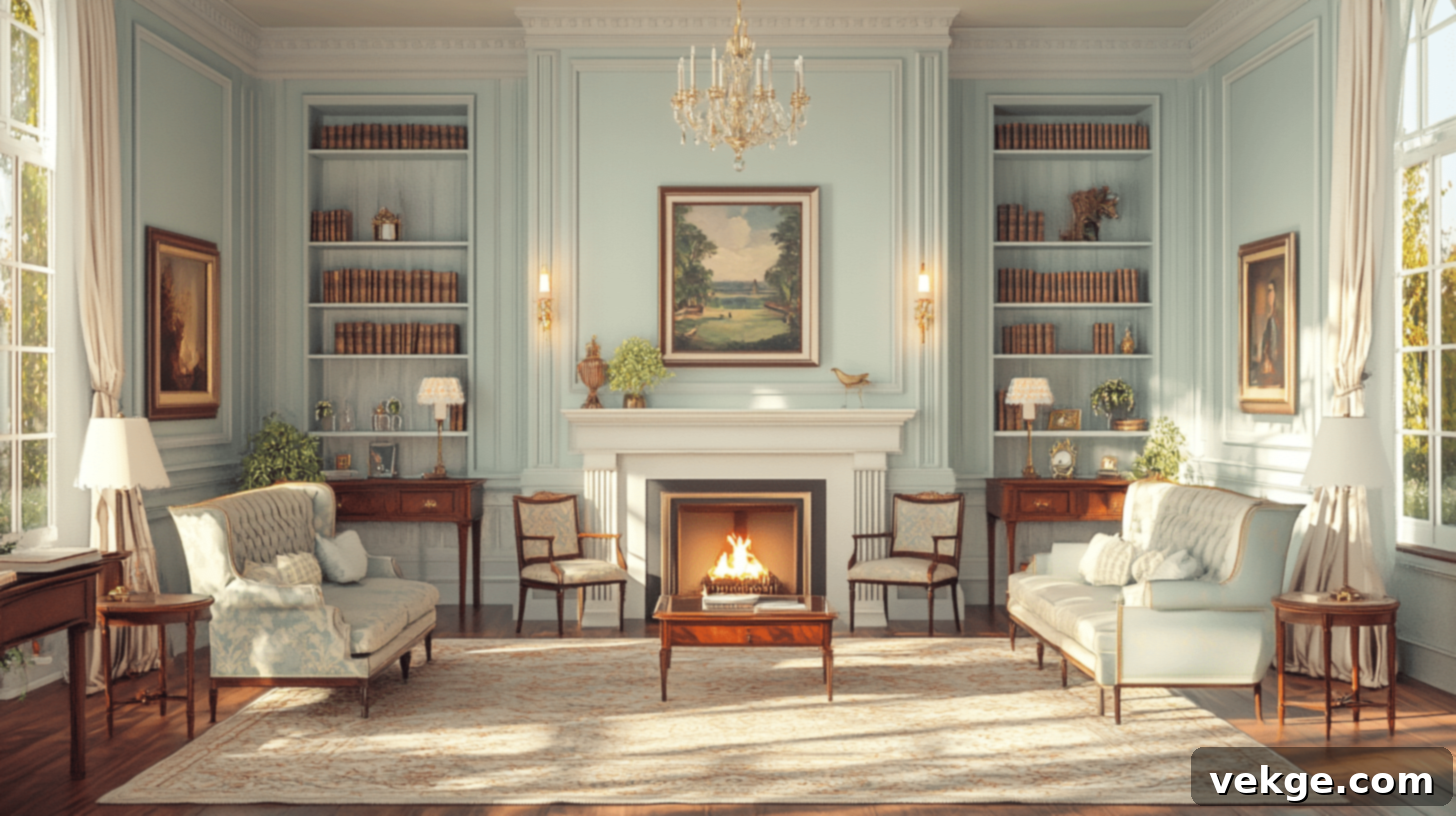
To achieve a quintessential Georgian living room, cultivate balance with symmetrical furniture arrangements. Position matching sofas directly across from each other, or place identical armchairs on either side of a prominent fireplace. If a fireplace isn’t present, create a strong focal point with a large piece of art or a console table flanked by windows. Make the fireplace the undeniable center of attention by using a simple, elegant white marble or painted wood surround, topped with a grand mirror or a significant artwork. A central chandelier should draw the eye upward, providing ambient light, complemented by wall sconces for softer illumination and matching table lamps on symmetrical side tables to reinforce balance. Select furniture with clean, straight lines or subtle curves, avoiding overly ornate or fussy pieces that would detract from the classical aesthetic. Introduce warmth and richness with natural wood tones in flooring, coffee tables, or bespoke bookcases, grounding the space in timeless sophistication.
Bedroom: Serene Sanctuary
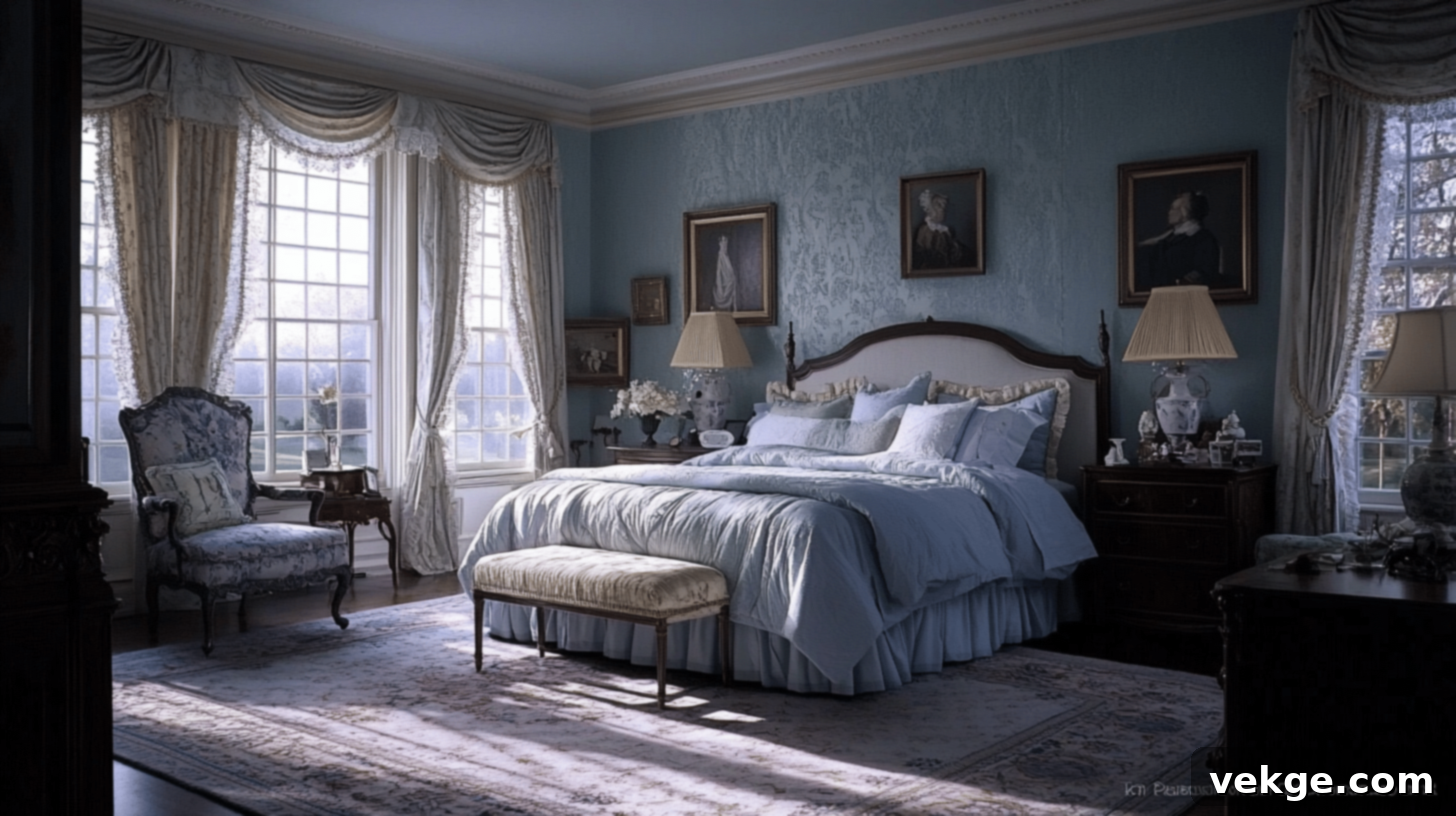
Transform your bedroom into a peaceful Georgian sanctuary by opting for a soothing color palette. Soft blues, muted greens, or warm grays on the walls create an atmosphere of calm and tranquility. The bed should be centered on the longest wall, flanked by matching nightstands and elegant lamps to establish perfect symmetry and balance. Choose high-quality bedding in subtle patterns or luxurious textures, steering clear of excessive or cluttered decorations. Hang floor-length curtains with simple headers, allowing them to fall gracefully without fussy details like elaborate swags or heavy pelmets. For added functionality and comfort, incorporate a small, upholstered bench at the foot of the bed or a comfortable reading chair in a quiet corner. Keep accessories minimal but meaningful, focusing on quality materials and carefully curated pieces to cultivate a refined, comfortable, and utterly serene retreat.
Dining Room: Formal Feasts and Everyday Grace
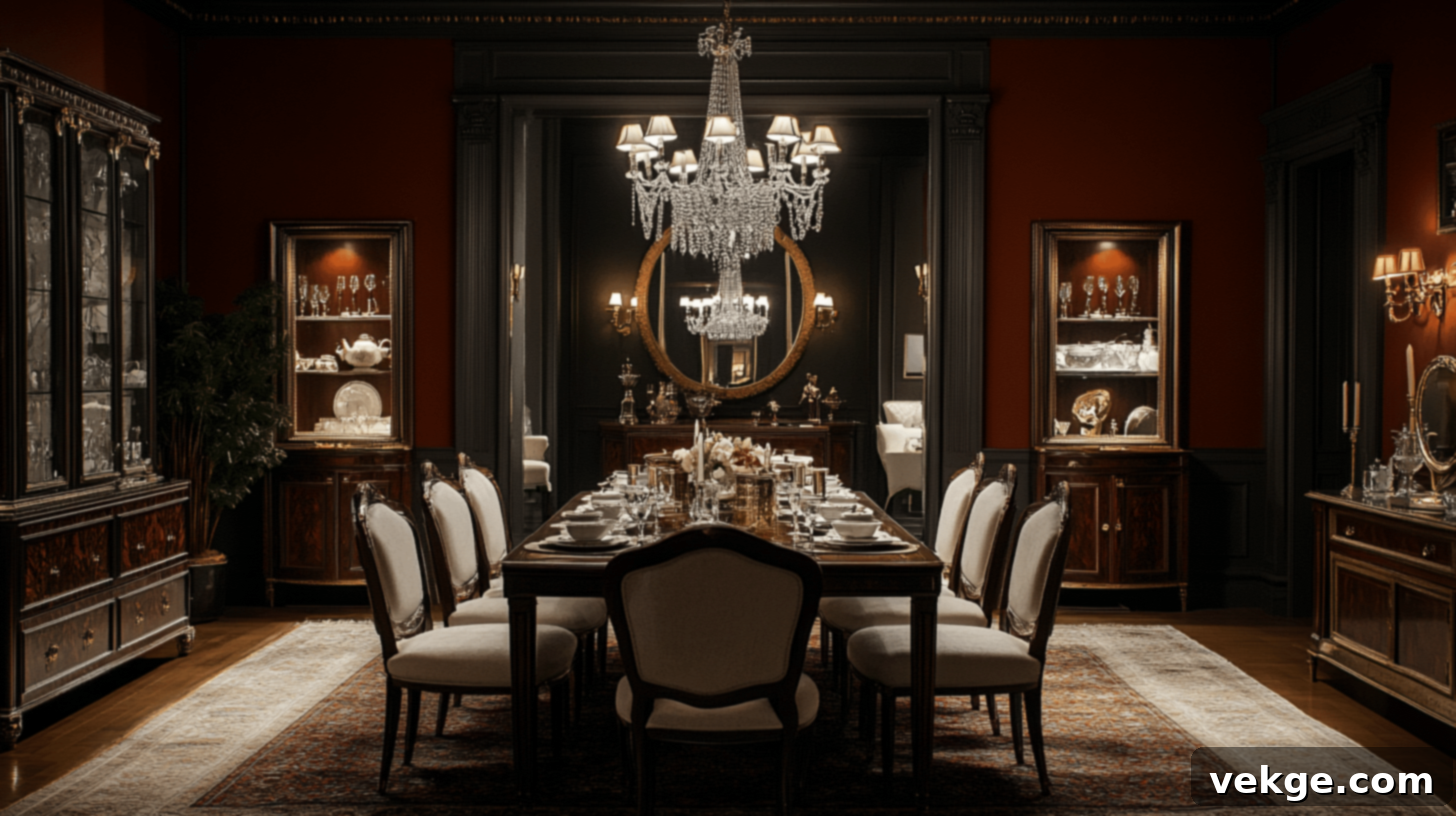
In a Georgian dining room, the dining table is the undisputed centerpiece, ideally placed directly beneath a striking chandelier with matching chairs symmetrically arranged around it. A substantial sideboard against one wall provides essential storage and a practical surface for serving. Consider incorporating elegant glass-front display cabinets to showcase cherished dishware or fine china. Embrace deeper, richer wall colors such as classic reds, forest greens, or sophisticated navy blues to evoke a formal and luxurious atmosphere. A large, ornate mirror hung strategically can both reflect light, making the room feel more expansive, and add a touch of traditional grandeur. Keep table settings simple yet elegant, utilizing crisp white linens, classic dishware, and a sophisticated centerpiece such as gleaming silver candlesticks or a tasteful arrangement of fresh flowers. The goal is to create a dining space that feels both special for grand entertaining and practical enough for everyday meals, embodying Georgian grace and functionality.
Color Palettes in Modern Georgian Interiors: A Harmonious Blend
Modern Georgian interiors masterfully integrate contemporary color palettes, creating a fresh yet distinctly classic vibe that honors tradition while embracing modern sensibilities.
Bold and Muted Tones: A Classic Combination
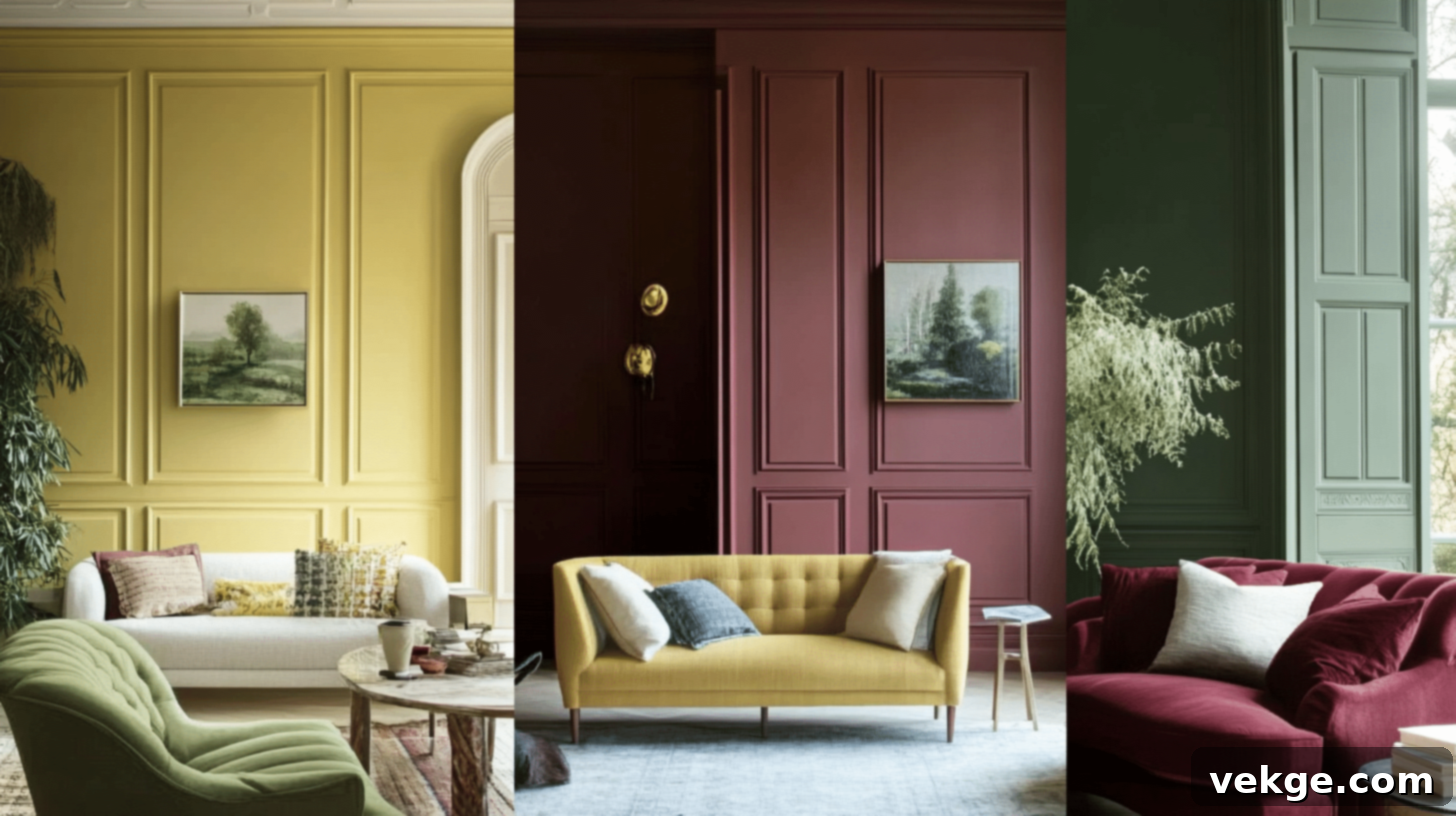
The essence of a Georgian color scheme lies in its sophisticated balance of bold, rich colors with softer, muted shades. Vibrant yellows can inject a cheerful and inviting energy into formal living spaces, while deep, contemplative greens bring a sense of calm and natural sophistication to dining rooms and libraries. Rich burgundies and warm terracotta tones can create a cozy and opulent atmosphere in bedrooms and studies, evoking a sense of historical luxury. These stronger hues are beautifully anchored by a base of soft neutrals like creamy off-whites, pale blues, and gentle grays, which provide a harmonious backdrop throughout the home. This dynamic combination allows for dramatic focal points while ensuring a cohesive and elegant flow from room to room. Typically, stronger colors are reserved for feature walls or specific zones, with neutrals connecting the various spaces. Woodwork and trim are often painted in crisp white or off-white, providing clean lines and a beautiful contrast against the more saturated wall colors, highlighting the architectural details.
Popular Modern Colors: A Fresh Interpretation
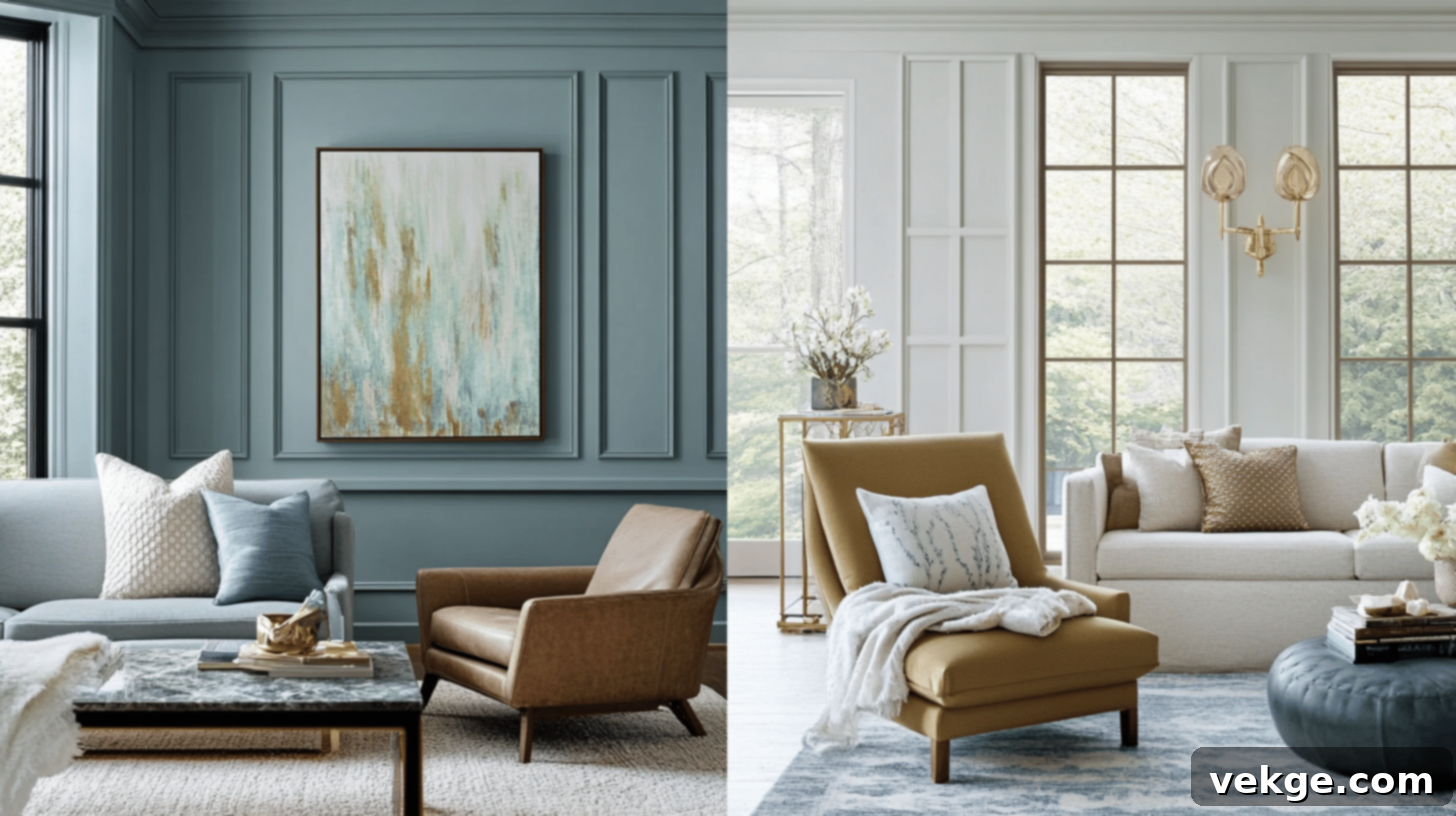
Today’s Georgian-style homes expertly update traditional palettes with sophisticated, contemporary shades that feel both classic and current. These colors often possess a nuanced complexity that shifts beautifully with natural light, adding depth and character to the interior:
- Egyptian Grey: This warm, inviting gray, often featuring subtle brown or taupe undertones, is a versatile choice for walls in main living areas. It offers a sophisticated neutral base that complements a wide range of furniture and decor, providing a sense of understated elegance without feeling cold.
- Honest John: A muted blue-green, ‘Honest John’ (or similar serene teal/sage tones) brings a sense of tranquil calm and subtle sophistication to bedrooms, bathrooms, and even cozy studies. Its soothing quality evokes natural elements, contributing to a restful atmosphere.
- Gold Accents: Beyond wall colors, strategic use of gold accents is crucial for introducing richness and warmth without overwhelming the space. This can be seen in elegant hardware, classical lighting fixtures, ornate mirror frames, or carefully chosen decorative objects. These metallic touches add a layer of luxury and historical authenticity, perfectly complementing the deeper wall tones.
These curated colors serve to beautifully blend Georgian heritage with modern furnishings and lifestyles, creating a truly timeless feel. They perform exceptionally well in homes bathed in natural light, where their subtle complexities can be appreciated as they gently shift throughout the day, enhancing the overall ambiance of the space.
Furniture and Decor for Modern Georgian Homes
Achieving the perfect modern Georgian aesthetic involves a thoughtful interplay between carefully selected period pieces and fresh, contemporary elements. The goal is to honor the style’s classical roots while ensuring the space feels current, comfortable, and personal.
Period Furniture: A Nod to History
Integrating authentic or reproduction Georgian furniture pieces adds undeniable character and historical depth to a modern home. The key is thoughtful selection and placement.
- Chippendale Chairs: Characterized by their elegant curved backs, intricate fretwork, and often cabriole legs, Chippendale chairs are exquisite choices for a dining room or as standalone accent pieces in a formal living area or study. Their refined craftsmanship immediately elevates a space.
- Focal Point Pieces: Select one or two high-quality period pieces, such as a grand mahogany sideboard in the dining room, an antique writing desk in a study, or a sophisticated chest of drawers in a bedroom. These focal points draw the eye and anchor the room’s design.
- Balance with Simplicity: To prevent a room from feeling overly museum-like or heavy, pair formal antique furniture with simpler, more contemporary pieces. This contrast creates visual interest and makes the space feel more lived-in and approachable.
Modern Touches: Contemporary Comfort
Modern touches are essential to ensure a Georgian home feels current, comfortable, and functional for today’s lifestyle. These elements introduce freshness and lightness.
- Natural Fabrics: Opt for luxurious yet understated natural fabrics like linen or cotton for upholstery, curtains, and bedding. These materials offer a fresh, breathable, and slightly relaxed modern look that beautifully contrasts with the formality of Georgian lines.
- Lighter Wood Finishes: While traditional Georgian furniture often features rich, dark woods, incorporating lighter wood finishes in contemporary pieces – such as oak, maple, or bleached walnut – can brighten the overall aesthetic and introduce a modern sensibility.
- Clean-lined Elements: Add glass-topped tables (coffee tables, side tables) or clean-lined, minimalist lighting fixtures (such as brushed brass pendants or elegant floor lamps) for a striking contrast that keeps the space from feeling heavy and outdated.
- Abstract Art: A large, contemporary abstract painting can provide an unexpected but harmonious counterpoint to classical architectural details, injecting a dose of modern sophistication.
DIY Ideas: Personalizing Your Georgian Style
For those who love a hands-on approach, DIY projects can infuse a personalized Georgian flair without a significant investment.
- Furniture Feet Upgrade: Replace plain, straight furniture feet on existing pieces (like chests of drawers or console tables) with elegant ball feet or classic bun feet. Stain them in a rich, dark tone to mimic period furniture.
- Cabinet Door Appliques: Add decorative wooden appliques or fretwork to plain cabinet doors, especially in a kitchen or study. These small details can instantly evoke a Georgian touch, adding architectural interest.
- Symmetrical Vignettes: Hunt for thrift store finds like ornate frames, ceramic vases, or small sculptures. Paint them in deep, rich colors such as oxblood red, navy blue, or emerald green, then arrange them symmetrically on mantels, sideboards, or console tables.
- Molding Magic: Install simple chair rails or crown molding in rooms that lack them. A coat of crisp white paint will instantly elevate the space, adding classic Georgian architectural detail.
Integrating Natural Textures in Georgian Design
While known for its formality, modern Georgian homes can beautifully incorporate natural elements and textures, softening the classical lines and creating warm, inviting spaces while maintaining their inherent elegance and classic style.
Floral Patterns: Organic Elegance
Floral patterns offer a wonderful way to introduce a touch of nature and softness into Georgian design without overwhelming its structured aesthetic.
- Botanical Prints: Simple botanical prints or antique etchings, framed in elegant gold or dark wood, can add a fresh, organic touch to a room. Arranged symmetrically on a wall, they maintain the Georgian sense of order while introducing natural motifs.
- Subtle Floral Wallpaper: In smaller, more intimate spaces like a powder room or a guest bedroom, a subtle floral wallpaper with a delicate pattern introduces a soft, natural element, creating a calm and inviting atmosphere. Choose patterns with muted colors to avoid a busy look.
- Embroidered Cushions: Embroidered cushions featuring plant designs, such as stylized leaves or classic floral motifs, are an excellent way to include floral patterns. They add texture and visual interest to sofas and armchairs while keeping the overall look understated and refined.
- Fresh Flowers: The simplest and most effective way to integrate florals is through fresh flowers. Arrange them artfully in classic containers like ceramic jars, crystal vases, or antique urns. This adds life, color, and a delightful natural fragrance to any room.
The key is to keep floral patterns balanced and appropriately sized for the room, enhancing the space with natural beauty without dominating or detracting from the classical framework.
Natural Textiles: Comfort and Sophistication
Natural textiles are fundamental in creating a warm, inviting, and tactile space within a Georgian home, balancing the architectural formality with soft, approachable comfort.
- Linen Curtains: Floor-length linen curtains, known for their elegant drape and subtle texture, create a soft, airy feel that beautifully complements large Georgian windows. Their natural creasing adds character and a relaxed yet refined touch.
- Wool Rugs: Wool rugs, especially those with traditional patterns reinterpreted in updated, muted colors, combine comfort and timeless design. They provide warmth underfoot, define seating areas, and add a layer of texture and pattern to hardwood floors.
- Cotton and Linen Upholstery: Upholstery in natural cotton or linen fabrics, whether solid, subtly striped, or featuring a delicate damask, adds a relaxed yet refined look to sofas, chairs, and benches. These materials are breathable, durable, and offer a comfortable tactile experience.
- Sisal or Seagrass Flooring: For more casual areas like sunrooms, mudrooms, or even a relaxed study, sisal or seagrass flooring offers a natural, textured base that grounds the space and introduces an organic, earthy feel.
- Raw Silk Accents: Throughout the home, raw silk accents in cushions, throws, or decorative drapes can add a touch of subtle sheen and luxurious texture, enhancing the overall richness of the interior.
When layering these materials, maintaining a cohesive color scheme and textural balance ensures each piece complements the others, contributing to a harmonious and inviting Georgian interior.
Wood Accents: Timeless Warmth
Wood accents are indispensable in bringing warmth, authenticity, and a sense of timelessness to Georgian design, connecting the interior to natural elements and historical craftsmanship.
- Hardwood Floors: Wide-plank hardwood floors in medium to dark tones, such as rich oak, walnut, or cherry, create a strong, natural foundation for any Georgian room. Their inherent beauty and durability provide an elegant and authentic backdrop.
- Exposed Ceiling Beams: In certain renovated or custom-built modern Georgian homes, subtly exposed ceiling beams can highlight architectural elements and add a touch of rustic charm and structural honesty, particularly in more informal living areas.
- Wooden Furniture: Carefully selected wooden furniture pieces, from classic console tables and elegant bookcases to substantial dining tables, emphasize the material’s natural beauty and craftsmanship. Pieces with intricate carvings or inlay work further enhance the Georgian aesthetic.
- Architectural Millwork: Beyond flooring, the extensive use of wooden architectural millwork—such as paneling, wainscoting, and mantelpieces—is a hallmark of Georgian design. These elements add significant depth, texture, and historical accuracy to rooms.
It’s important to balance different wood tones to avoid a flat or monotonous look. Mixing light and dark finishes, and combining pieces from various eras, can create a collected, evolved feel that enriches the design while providing comfort, authenticity, and visual interest.
Balancing Tradition with Modern Needs in Georgian Design
The enduring appeal of Georgian homes lies in their ability to seamlessly blend their revered traditions with the practical demands of modern living. This balance is key to creating spaces that are both historically grounded and perfectly suited for today’s families.
Merging Traditional Structure with Modern Elements
The foundation of a successful modern Georgian home lies in respecting its classical structure while carefully introducing contemporary elements.
- Georgian Symmetry as Your Foundation: Always start with the inherent symmetry and order of Georgian design. This provides a clear, balanced framework onto which modern elements can be layered without chaos. It dictates window placement, room alignment, and overall layout.
- Contemporary Art within Traditional Frameworks: Juxtapose sleek, contemporary abstract art or vibrant photography against classically paneled walls or above an ornate fireplace. The contrast creates visual tension and highlights both the old and the new.
- Updating Classic Furniture with Current Materials: Reupholster a traditional Chippendale-style chair in a modern linen or velvet fabric, or pair an antique console table with a minimalist, geometric lamp. This refreshes classic pieces for a modern context.
- Mix Periods Thoughtfully for Visual Interest: Don’t be afraid to combine different eras. A mid-century modern credenza can sit comfortably in a Georgian dining room if its lines are clean and its scale is appropriate. The key is thoughtful curation, not random assortment.
Adapting for Contemporary Living
Modern life requires adaptability, and Georgian homes can be cleverly reconfigured to meet these demands while retaining their essence.
- Convert Formal Rooms into Functional Family Spaces: A formal drawing-room can become a comfortable media room, or a less-used parlor can be transformed into a vibrant home office or children’s play area, reflecting modern family priorities.
- Create Open Sight Lines While Maintaining Defined Areas: While full open-plan might compromise Georgian integrity, strategic archways or double doors can create open sightlines between living and dining areas, improving flow without losing distinct room identities.
- Scale Furniture for Modern Comfort: While traditional Georgian furniture can be grand, modern comfort often means larger, softer seating. Choose contemporary sofas and armchairs that offer generous proportions but still feature classic lines and refined upholstery.
- Incorporate Technology Discreetly: Integrate smart home systems, entertainment centers, and charging stations discreetly. Hide wiring, embed speakers into ceilings, and choose wall-mounted TVs that can be concealed or blend seamlessly with the decor.
- Design Kitchens and Bathrooms with Georgian Proportions but Modern Fixtures: Maintain the spaciousness and formal layouts of Georgian-era kitchens and bathrooms but outfit them with state-of-the-art appliances, contemporary sanitaryware, and energy-efficient fixtures.
The most successful Georgian-inspired homes often maintain a balance of approximately 70-80% traditional elements, complemented by 20-30% modern updates. This thoughtful integration creates spaces that feel both deeply historically grounded and perfectly suited to the functionality and aesthetic preferences of today’s lifestyle, offering the best of both worlds.
Conclusion: The Enduring Allure of Modern Georgian Design
Georgian design continues to be revered for its timeless principles of balance, proportion, and exceptional craftsmanship. By artfully incorporating these enduring elements into a modern home, you unlock the potential to create a living space that feels both classically elegant and eminently practical for contemporary life. The beauty of this architectural style lies not just in its historical significance but in its inherent adaptability.
From the precise symmetry of the overall layout to the carefully chosen materials and the sophisticated selection of furniture, the Georgian style provides an incredibly solid and versatile foundation for designing a truly beautiful and harmonious home. It offers a clear blueprint for creating spaces that resonate with dignity, order, and visual pleasure.
With the right blend of cherished traditional features and thoughtful modern updates, you can enjoy a home that not only boasts an impressive aesthetic but also functions flawlessly for the rhythms of daily life. This fusion ensures that your residence is not just a house, but a thoughtfully curated sanctuary that offers comfort, style, and a connection to a rich architectural heritage.
Eager to delve deeper into the fascinating world of home design and decor, or seeking further inspiration for your next project? We invite you to explore other similar blogs on our website, where you’ll find a wealth of helpful tips, creative ideas, and expert guidance to fuel your design aspirations.
